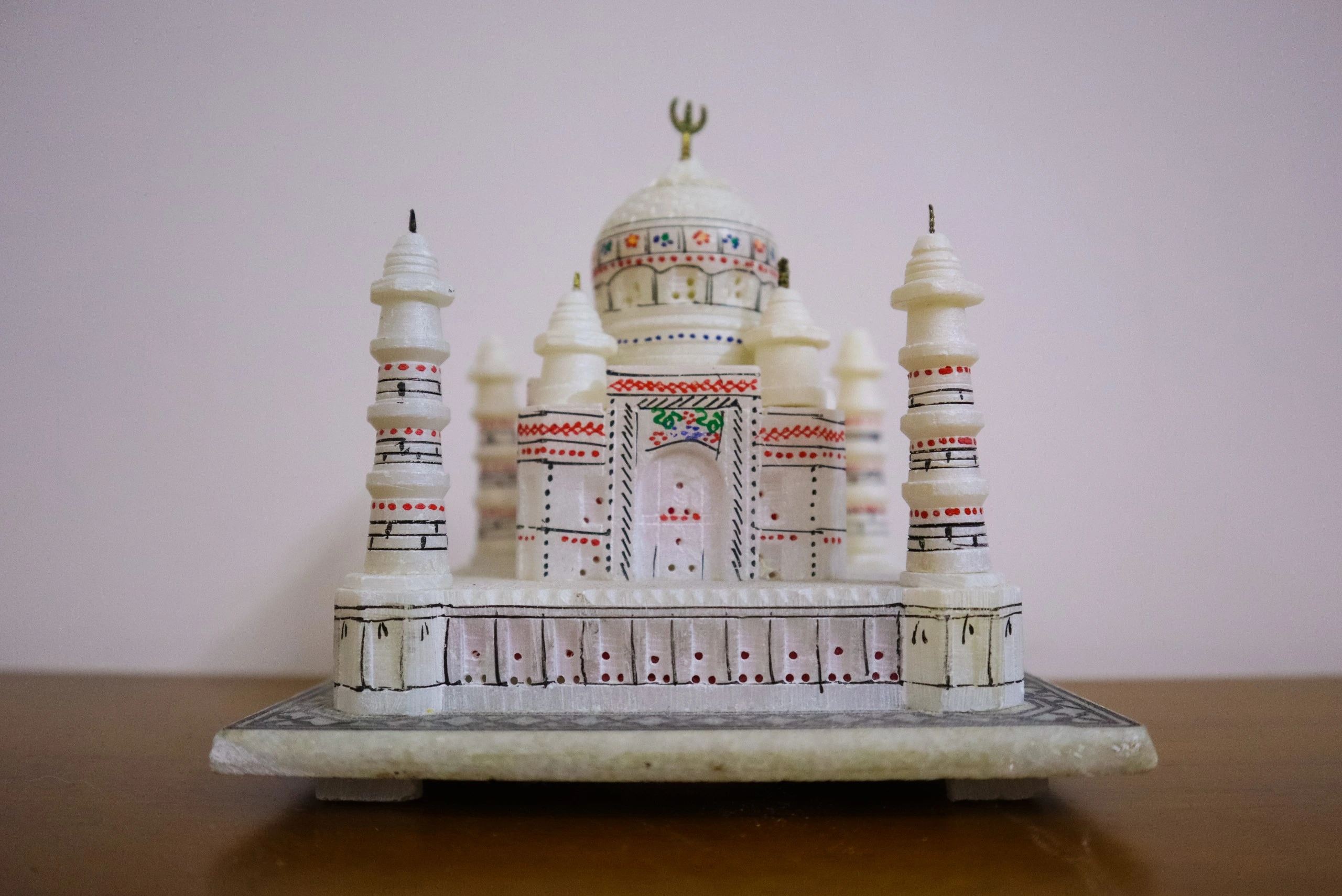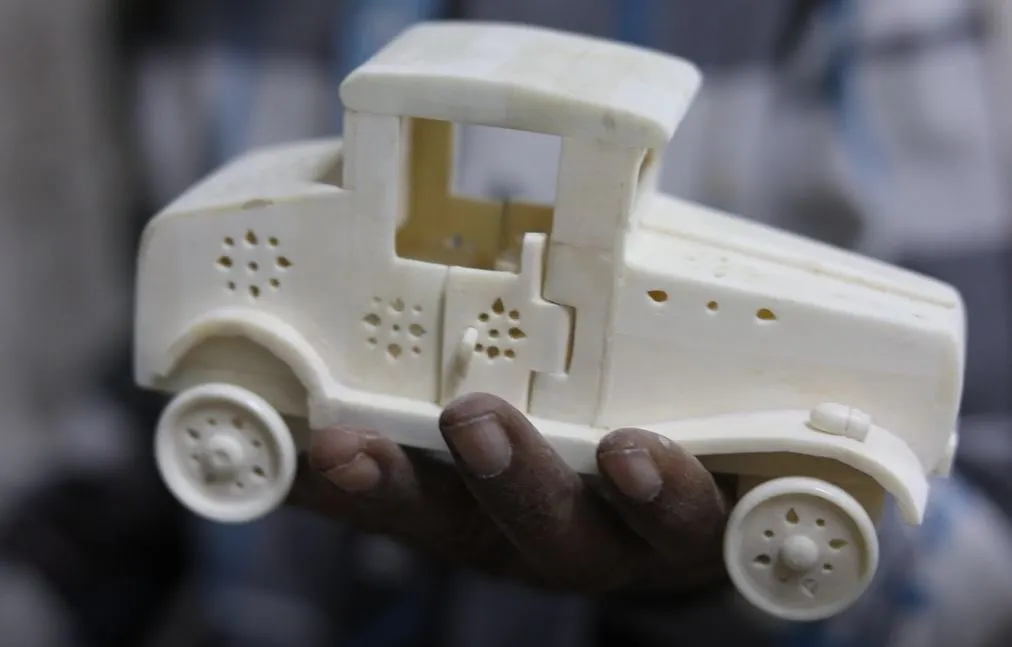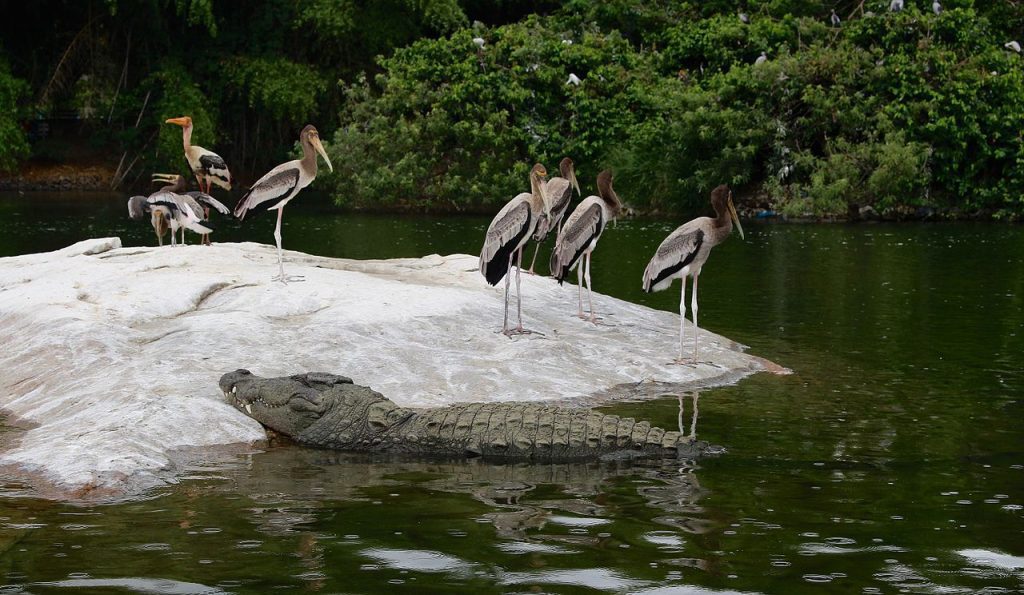As an avid traveller and lover of cultural immersion, I have had the pleasure of discovering India’s vibrant and diverse landscape. From the snow-capped peaks of the Himalayas to the sun-kissed shores of the south, India is a treasure trove of experiences that will leave a lasting impression on any wanderlust’s soul. And what better way to relive these experiences than by taking a piece of India back home with you in the form of a stunning souvenir?
In India, it’s not just about collecting fridge magnets or shot glasses with the name of the countries and cities you visited. Indian souvenirs offer a diverse range of traditional handicrafts and products that showcase the country’s rich cultural heritage and the remarkable skills of its artisans. As I explore the countless bazaars, markets, and shops that dot the landscape, I can’t help but be drawn to the stunning Indian souvenirs and handicrafts that are on display.

Indian souvenirs are more than just simple objects; they reflect the country’s rich cultural heritage. It displays the creativity of its people, and the remarkable craftsmanship passed down from generation to generation. Purchasing a local handicraft or souvenir serves as a memento of your journey. It also contributes to the livelihoods of small-scale artisans who depend on tourism for their income.
Whether you are a first-time traveller to India or a seasoned visitor, this blog will offer a unique perspective on the country’s stunning souvenirs and handicrafts. You will gain a deeper appreciation for the beauty and craftsmanship of each item. It will also inspire you to bring a piece of India’s rich cultural heritage back home with you. The best way to embark on a souvenir shopping spree is by booking a Savaari to take you to the most incredible places to buy your handcrafted masterpieces.
So, join me on a fascinating journey through the world of Indian souvenirs, where I’ll showcase some of the most iconic handicrafts and products you can bring back with you from your travels. Whether you’re exploring the bustling bazaars of Delhi, the tranquil backwaters of Kerala, or the pristine beaches of Goa, there’s something for every taste of Indian souvenirs. So, let’s dive in and uncover the beauty of India’s souvenirs.
Thanjavur painting – The rich heritage of iconic South Indian artistry
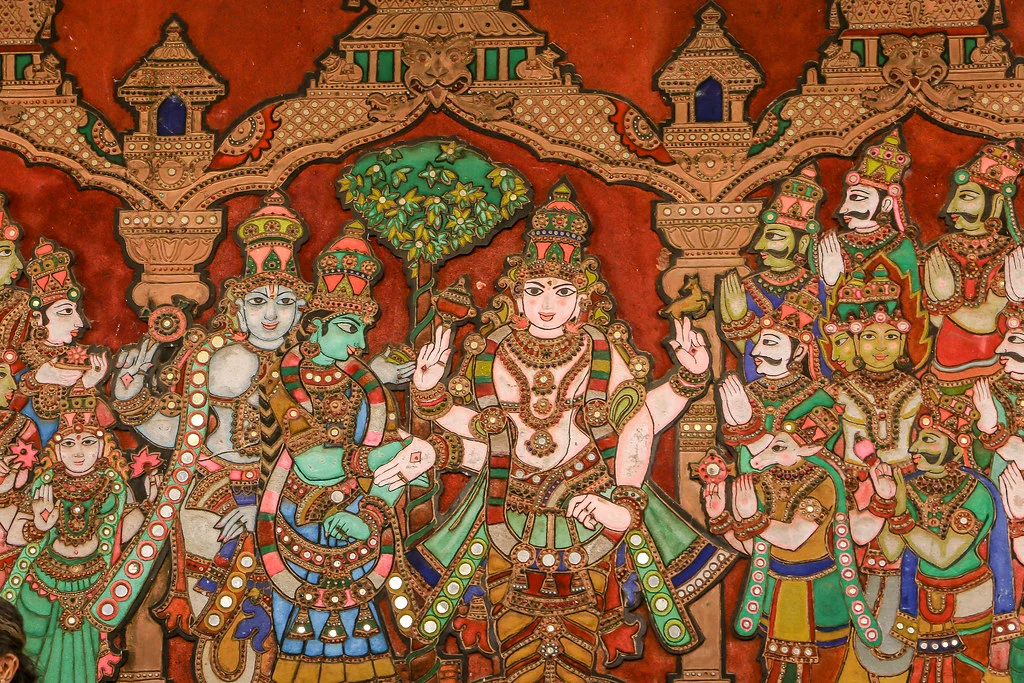
As I wandered through the narrow lanes of Thanjavur, a town in Tamil Nadu, I came across a quaint shop selling Thanjavur paintings. Memories of my grandfather’s house flooded back, and I couldn’t help but be drawn to these exquisite works of art. After all these years, it was almost like deja vu, seeing these paintings in person.I vividly remember the Thanjavur painting in my grandfather’s house, hanging proudly on the wall. He had picked it up during his trip to Tamil Nadu in the 1950s, a beautiful souvenir for my grandmother, a lover of art. It was a small hut they lived in back then, and the painting brought life and colour into their humble home.
My grandmother cherished the painting, telling stories about the history and culture of Tamil Nadu every time she looked at it. As a child, I often sat with her, listening to her tales and admiring the painting. It has become a part of our family’s heritage, a reminder of our roots and the importance of art in our lives. Thanjavur paintings have a rich history dating back to the 16th century. These paintings were created as a form of expression by the Maratha rulers of Thanjavur, a dynasty that ruled this region for several centuries. The paintings often depict religious and mythological themes and are adorned with precious stones, gold leaves, and other decorative elements.
As I spoke to the shopkeeper, he explained the significance of these paintings. They are considered a form of spiritual art, with many of the themes depicted in the paintings tied to Hindu mythology and religious beliefs. Unfortunately, these paintings are also incredibly rare, with only a handful of skilled artisans continuing today’s tradition. Ultimately, I chose a painting depicting Lord Ganesha, the Hindu god of wisdom and prosperity. It was a beautiful representation of a beloved deity, with intricate details and vibrant colours.
As I held the painting in my hands, I felt a deep sense of connection to the rich culture and history of Tamil Nadu. A Thanjavur painting is a perfect souvenir to collect, a tangible representation of the beauty and spirituality of South India. It’s a rare and precious work of art that will be treasured for years to come, a constant reminder of the magic and wonder of this vibrant region and a beautiful link to my family’s past.
Where to find:
- Parry’s Corner, Meenambal Salai, Kannadasan Nagar, Kodungaiyur, Chennai
- T Nagar, Ranganathan Street, Chennai, India
Glinting heritage – The timeless beauty of Budithi Brassware in Andhra Pradesh
While travelling through Andhra Pradesh, my Savaari cab driver Raghu mentioned a small village called Budithi, famous for its brassware. Intrigued, I decided to take a detour and explore this little-known village. As I entered the village, I was struck by the charming simplicity of the place. The narrow lanes were lined with tiny, humble homes, and artisans hammering away at brass echoed through the streets. I went to one of the small workshops, where I was introduced to the art of Budithi brassware.
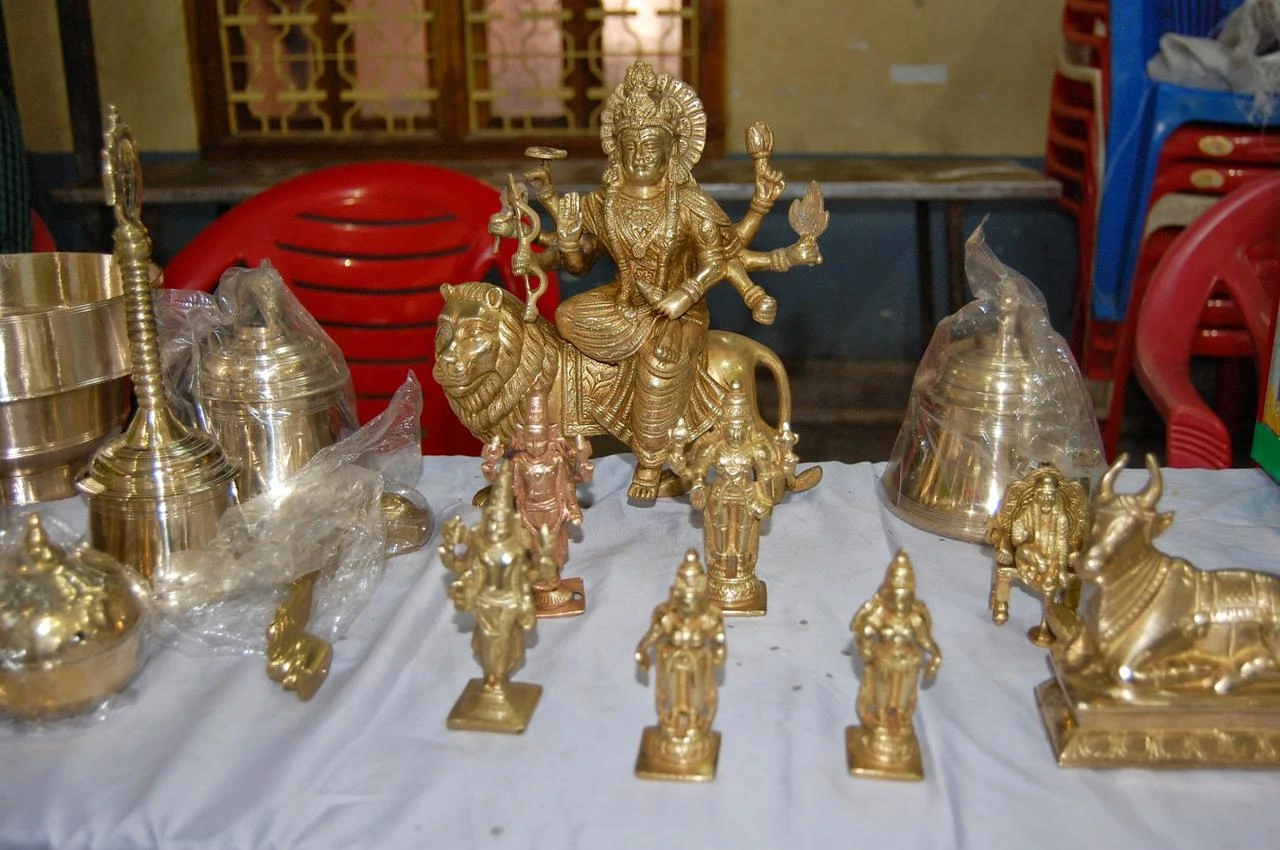
The artisans skillfully shaped and moulded brass alloys into intricate designs, using traditional techniques passed down through generations. Raghu told me that the history of Budithi brassware is just as fascinating as the art itself. It is said that the art originated in the 17th century when a group of artisans migrated from Tamil Nadu to Budithi. These artisans were skilled in metalwork and passed down their knowledge to their descendants, who continue to carry on the tradition.
As I browsed through the various brassware on display, I realised that selecting the best and most authentic pieces could be daunting. So I asked the artisans for tips on picking out the best brassware, and they were happy to share their knowledge. They advised me to look for a few key characteristics, such as the weight of the piece, its shine, and the quality of the etchings. They explained that authentic Budithi brassware is heavy and sturdy, with a rich, warm glow from using high-quality brass alloys. The artisans further explained that it’s essential to look for a mark of authenticity on the brassware, such as the Budithi Village name or a stamp of the artisan who crafted it. This ensures that the piece is genuinely authentic and not a cheap imitation.
With this newfound knowledge, I carefully inspected each piece before making selections. I was thrilled with the brassware I brought home, knowing I had picked the best and most authentic pieces. Next, I carefully selected a few pieces that caught my eye, including a stunning brass vase with intricate etchings and a small brass figurine that would make the perfect addition to my collection.
Where to find:
- Kalanjali Arts & Crafts, Nampally, Hyderabad.
- Lepakshi Handicrafts Emporium, Gun Foundry, Hyderabad & Minerva Complex, S.D.Road, Secunderabad.
Woven legends – The exquisite craftsmanship of Naga Shawls in Nagaland
When my best friend Kekhrielie invited me to visit her hometown in Nagaland, I was excited beyond words. She had always talked about her culture and traditions during our hostel days, and I was eager to experience it all firsthand. As we strolled through the local markets, Kekhrielie pointed out the intricate designs and explained their significance. She even made me try on the traditional Angami makhela, a stunning attire made of handwoven cotton with intricate embroidery that was truly a work of art.
As we continued to explore the markets, we came across a beautiful Naga shawl “Lohe” that caught my eye. The shawl was made of soft cotton with bold colours and striking patterns, reflecting the rich culture and heritage of the Naga people. I knew right then that I had to have it. The process of bargaining and haggling with the vendors was so much fun, and I felt a sense of pride and accomplishment when I finally walked away with the shawl.
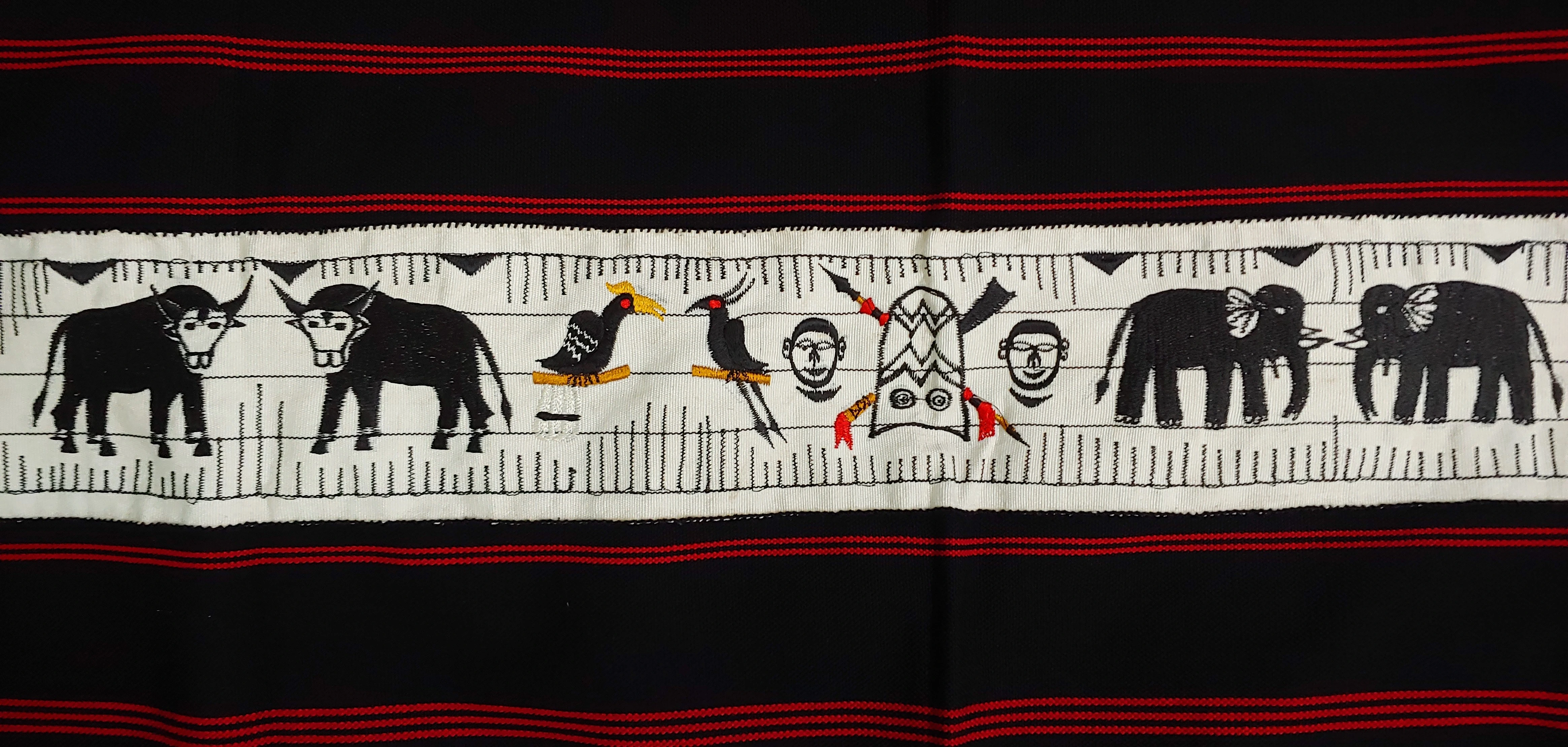
Kekhrielie carefully guided me to choose an authentic, handwoven shawl of the highest quality. Then, she taught me to look for the telltale signs of a genuine piece – the tribal prints, the texture of the fabric, and the attention to detail in the weaving. I learned that the Naga shawl holds great significance to the people of Nagaland, who once wore it as a symbol of tribal identity and warrior status. Each tribe had their unique design, and one could easily recognize a person’s tribe by looking at the shawl they wore.
Kekhrielie also shared how the Tsungkotepsu shawl of the Ao tribe was worn only by men who had offered a mithun sacrifice. These shawls were a significant aspect of Naga culture, rich in tradition and symbolism. As I draped the Naga shawl over my shoulders, I felt a sense of connection to the rich culture of Nagaland. It was a beautiful reminder of my trip, and I cherished it as one of the most unique Indian souvenirs I collected over the years.
Where to find:
- Mao Market, Kohima, Nagaland
- Jasokie Market, G.S.Road, Marwari Patti, Dimapur, Nagaland
Colours of folklore – The enchanting Madhubani paintings of Bihar
During my trip to Bihar, I stumbled upon a beautiful painting that caught my eye – Madhubani, also known as Mithila, in the Jay Prakash Narayan Airport. I was amazed to learn that this traditional art form is still widely practised in the region and has a centuries-old history. As I explored the streets of Bihar, I couldn’t resist stopping by a small shop selling Madhubani paintings. The vibrant colours and intricate designs were breathtaking, and I knew I had to take one home.
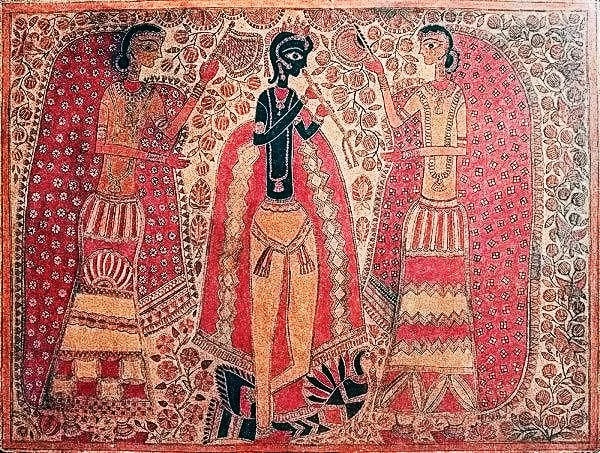
As I was admiring the painting, a local shopkeeper approached me and shared some fascinating insights about the history and culture of Madhubani art. He explained how women traditionally created paintings on the walls and floors of their homes during auspicious occasions like weddings and festivals. Over time, this art form gained popularity and became what we know today as the Madhubani painting. Madhubani art has five styles: Bharni, Katchni, Tantrik, Godna and Kohbar.
I had the chance to speak with a local expert who gave me valuable advice on detecting the most authentic Madhubani paintings. She explained that there are several key features to look for, such as the quality of the paper, the type of paint used, and the intricacy of the design. To detect authentic Madhubani paintings, look for handmade paper with a slightly rough texture, natural paints made from turmeric, indigo, and sandalwood, and intricate and symmetrical designs depicting nature, mythology, or social events.
I was so intrigued by the art form that I took a workshop to learn how to paint in the Madhubani style. It was such a fun and rewarding experience to use my fingers, brushes, twigs and nib-pens to create my masterpiece. When I returned home, I proudly displayed my Madhubani painting in my living room. It quickly became a conversation starter among my friends, and I loved sharing the story behind it with them. One of my friends loved the painting so much that she asked me to get her one on my next trip to Bihar.
Where to find:
- Khetan market, Birla Mandir Road, Bakarganj, Patna
- Patna market, near Gandhi Maidan, Ashok Rajpath, Patna
Channapatna toys – Colourful whimsical wonders of Karnataka
I remember the first time my dad suggested buying me a wooden toy doll as an adult. I found it odd and hilarious. But little did I know that this innocent suggestion would lead me to discover the fascinating world of Channapatna toys. As we wandered through the small town of Channapatna in Karnataka, I couldn’t help gazing at the whimsical and brightly coloured wooden toys that lined the streets. But as I delved deeper into the history behind these masterpieces, I began to appreciate their significance.
Legend has it that the art of wooden toy making was brought to Channapatna by Persian artisans who were invited by Tipu Sultan, the ruler of Mysore, in the 18th century. Over time, the locals developed their unique style and techniques, creating beautiful and safe toys for children to play with. The traditional method of making Channapatna toys involves using softwood turned on a lathe and then coated with non-toxic lacquer made from natural materials. This gives the toys their signature bright colours and makes them safe for children to play with.
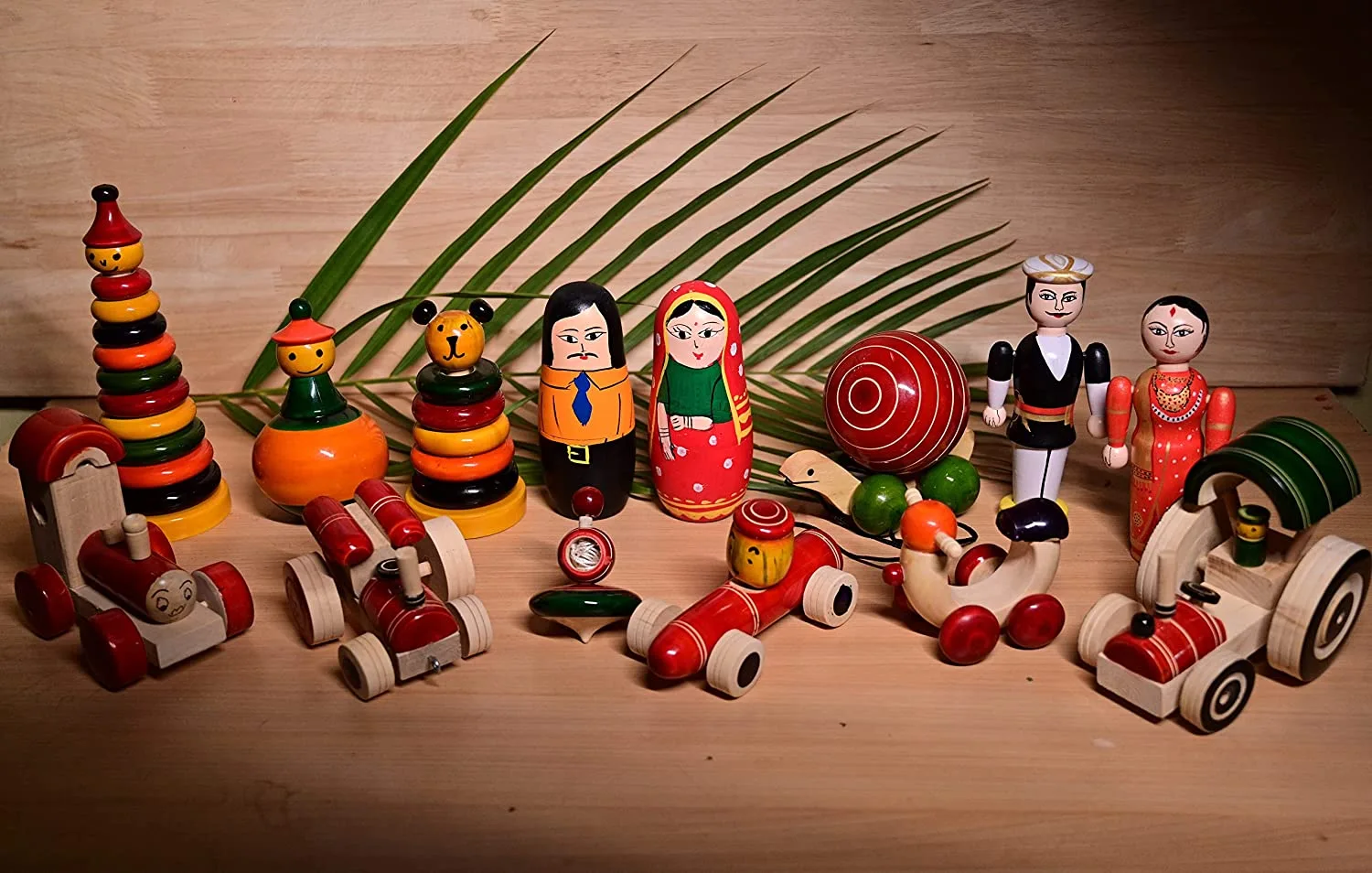
As I looked at the intricate details of the Channapatna toy dolls, I couldn’t help but fall in love with them. The thought that each piece was handcrafted with love and care made them even more special to me. I bought a few for myself and my loved ones as Indian souvenirs. As I held them in my hands, I knew these toys would forever have a special place in my heart. I couldn’t help but imagine my future child playing with these same toys someday. Knowing that they are non-toxic and made from natural materials made me feel even more confident to pass them down to the next generation.
There’s something so beautiful and emotional about sharing something with such a rich history and cultural significance with those you love. It’s a small reminder that even in this fast-paced world, there are still treasures to be found and cherished. So as I left Channapatna, I knew that these toys would always hold a special place in my heart. I know that I would continue to share their story with anyone who would listen.
Where to find:
- Karnataka Handicrafts Development Corporation (KHDC), Channapatna
- Maitri Crafts, Channapatna
- Maya Organic, Channapatna
- Cauvery Emporium, Channapatna
The ancient legacy of Jharkhand – Handcrafted Dhokra art
I remember the day when I booked a cab to travel in Ranchi after my friend’s wedding, looking for a unique souvenir to bring back home. That’s when I stumbled upon a group of men selling Dhokra art, which I had heard was a significant art form in India. As I examined the various pieces, I couldn’t help but marvel at the intricate designs and exquisite details. I knew I had to have one of these pieces as a reminder of my trip to India. But as I was about to make a purchase, something seemed off. The seller hesitated to provide information about the art’s origin, and the price needed to be higher. I realised I might be getting scammed into buying a fake piece of Dhokra art.
Determined to find the real deal, I began to do my research. I learned Dhokra art has a long and rich history in India, dating back over 4,000 years. It is made using the lost-wax casting technique, which involves creating a mould from a clay model and pouring molten metal into it.
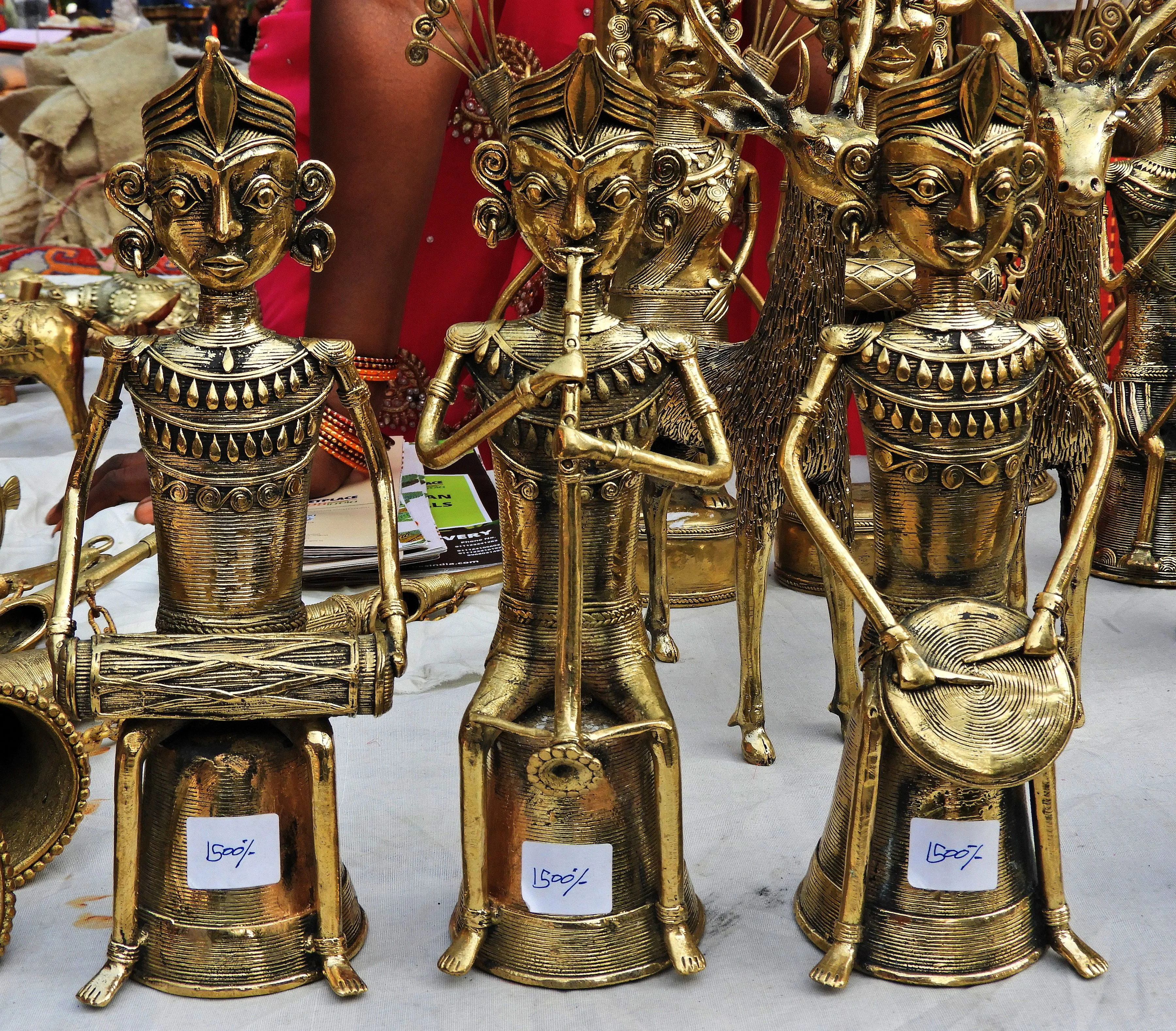
Dhokra art is significant because it is a form of artistic expression and a reflection of Indian culture and tradition. Each piece tells a story and represents the community’s beliefs, values, and way of life.
After hours of searching, I found a reputable seller to show me the authentic Dhokra art. I purchased a miniature statue of a dancing goddess, intricately crafted with delicate details and a warm golden hue. I now proudly display my Dhokra art at home, reminding me of my unforgettable trip to Bihar. The Dhokra art from the region makes excellent Indian souvenirs that are now a rage in designer stores. Buy it from the source at the cost price and promote the dying art of these local artisans.
Where to find:
- Tribal Cooperative Marketing Development Federation of India (TRIFED) showroom, Ranchi.
- Markets in Chaibasa and Jamshedpur in West Singhbhum district.
- Annual Tribal Art and Craft Mela in Ranchi.
- Villages where Dhokra artisans reside, such as Chakulia, Jhiri, and Pichhri.
The crown of Garhwal – The majestic Sikoli Topi of Uttarakhand
During my visit to Uttarakhand, I chanced upon a fascinating article of local clothing called the Garhwali Topi. This exquisite headgear, worn by men in the Garhwal region of Uttarakhand, is crafted from wool and adorned with resplendent embroidery, making it an exceptional and distinctive keepsake. As soon as I saw it, I knew I had to acquire one for my brother, who has an affinity for cultural trinkets.
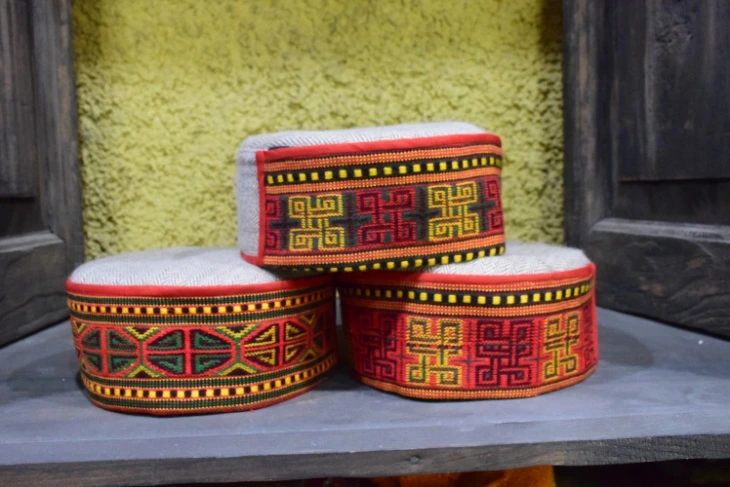
Intrigued by its history and significance, I approached a nearby vendor to learn more. The shopkeeper informed me that the Garhwali Topi, also known as Sikoli, is an emblem of pride for the people of Uttarakhand. It has been an integral part of their traditional attire for generations. Originally designed as a lightweight and weather-resistant cap for Pahadi men, the topi has evolved to serve various purposes, such as carrying heavy loads on the head.
The shopkeeper gave me tips on identifying authentic Garhwali Topis to avoid buying counterfeit ones. Genuine topis are handmade, taking days to craft with careful attention to embroidery and color richness. I was warned about fake topis in the market and advised to inspect wool quality, embroidery intricacy, and design authenticity before purchasing. With his guidance, I found a beautiful topi representing Uttarakhand’s cultural heritage. Whenever I see my brother wearing the Garhwali Topi, I am reminded of my trip to Himachal and the wonderful experience of discovering this unique souvenir among several Indian souvenirs.
Where to find:
- Gandhi Road Market in Dehradun
- Moti Bazaar in Dehradun
- Government Handicraft Emporium in Rishikesh
The fabric of royalty – The majestic carpets and Pashmina Shawls of Jammu and Kashmir
During my trip to the beautiful state of Jammu and Kashmir, I was mesmerised by the incredible variety of Indian souvenirs available in the local markets. However, two particular items stood out to me: Pashmina shawls and Kashmiri carpets.
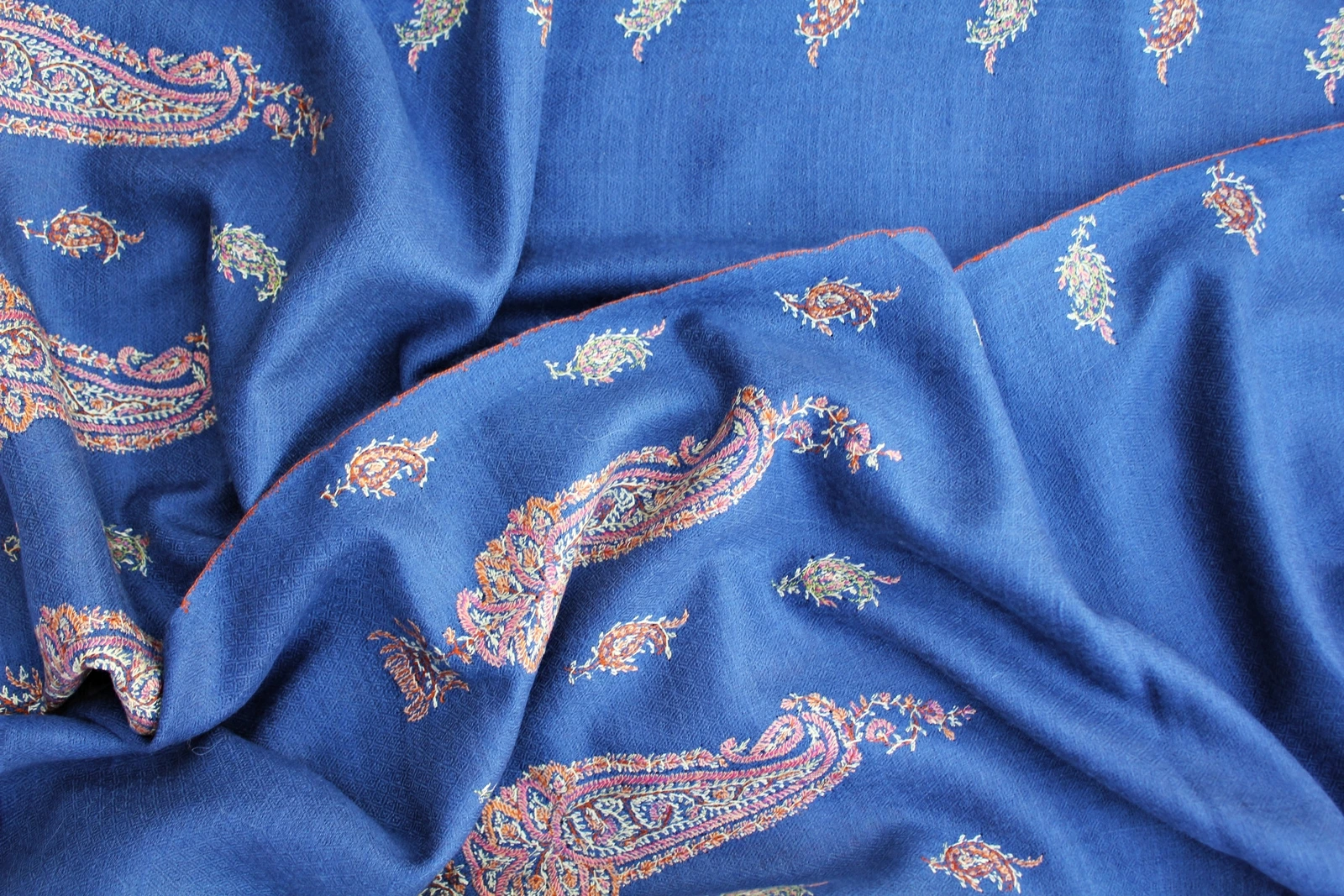
As I delved deeper into the history of these Indian souvenirs, I was fascinated to learn about their rich cultural significance. Pashmina shawls, made from the wool of Cashmere goats, have been an integral part of Kashmir’s culture for centuries. The Mughal emperors treasured them for their softness, warmth, and beauty. They remain highly prized today for their exceptional craftsmanship and intricate designs.
Similarly, Kashmiri carpets have a long and illustrious history in the region. Woven by hand using high-quality wool, they are renowned for their vivid colours and intricate designs. Each carpet is a work of art and is considered an essential part of Kashmir’s cultural heritage.

While exploring the local markets, I was struck by the sheer number of Pashmina shawls and Kashmiri carpets on offer. However, I quickly realised that many of the products sold were fake. Knowing how to pick an authentic piece was essential.
I learned that the key to identifying an authentic Pashmina shawl is its softness and fineness. Genuine Pashmina shawls are made from hand-spun and handwoven fibres. This results in a softness and lightweight feel that synthetic imitations cannot match. Similarly, authentic Kashmiri carpets should have a high knot count and be made using high-quality wool. These factors ensure the rug will be durable and long-lasting, maintaining its intricate design and vivid colours for years.
Where to find:
- Raghunath Bazaar, Hari Market and Vir Marg in Jammu.
- Lal Chowk and Residency Road in Srinagar, Kashmir.
The ancient art of storytelling through Pattachitra in Odisha
During my travels through the stunning state of Odisha, I discovered the exquisite art form known as Pattachitra. Originating in the small village of Raghurajpur, this ancient painting style has been passed down through generations, with each artist infusing their unique style and flair.
The history of Pattachitra art is steeped in tradition and mythology. It was initially used to depict scenes from Hindu epics such as the Mahabharata and the Ramayana and was often used for religious purposes. However, Pattachitra has evolved to include a broader range of subjects, including depictions of village life, flora and fauna, and everyday scenes.
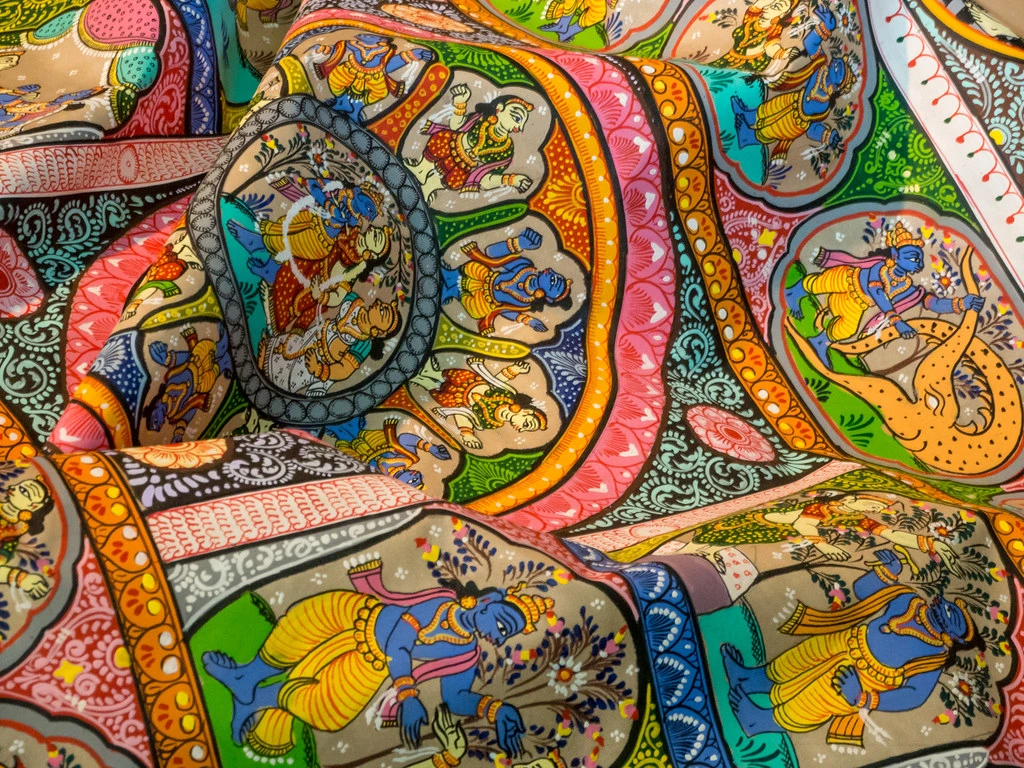
I booked a cab from Puri to Raghurajpur, and as I explored the village, I was struck by the passion and skill of the local artists. They take great pride in their work, using natural pigments and handmade paper to create intricate and breathtakingly beautiful art pieces. I was fortunate to witness the process firsthand, from the initial sketch to the finished product. Watching the artists expertly apply layer upon layer of colour and detail was a truly mesmerising experience. It gave me a deep appreciation for the art form.
When selecting an authentic piece of Pattachitra art, there are a few key factors to consider. First, look for pieces that use natural pigments and handmade paper. These are the hallmarks of a truly authentic work. Additionally, pay attention to the artwork’s level of detail and intricacy. The best Pattachitra pieces are highly detailed and feature a range of vibrant colours. It showcases the skill and dedication of the artist. As I gazed at the exquisite pieces of Pattachitra art, I was enamoured by the incredible details and vibrant colours that breathed life into each painting. Each brush stroke was a testament to the skill and dedication of the artisan who created it. I knew I had to take a piece of this magical art form home with me as a cherished souvenir.
Where to find:
- Raghurajpur
- Shahid Nagar Market, Bhubaneswar
- Bapuji Nagar Market, Bhubaneswar
Marble show pieces – Masterpieces carved in stone from Agra
As I walked through the bustling markets of Agra, the vibrant colours and sounds of the city enveloped me. Amidst the chaos, my eyes were drawn to the exquisite marble showpieces on display. Pure white marble glimmered in the sunlight, catching my eye with its intricate details and superb craftsmanship. Being a first-time visitor to Agra, I booked a cab to explore the city as I was eager to take home a piece of this majestic city’s rich cultural heritage as a token of my visit.
As I strolled through the market, I couldn’t help but feel overwhelmed by the sheer number of options. Thankfully, the locals I met were kind enough to guide me to the best places to shop for Indian souvenirs. They warned me of the numerous counterfeit showpieces sold at many tourist traps. And so, I found myself at the Marble Cottage on Fatehabad Road, a cosy little shop nestled among the busy streets. The moment I stepped inside, I was struck by the sheer beauty of the authentic marble replicas on display. Each piece in the collection was more stunning than the previous one, including miniature marble replicas of the Taj Mahal, ornamental boxes, vases, statues, and other decorative items.
As I walked through the store, my eyes were drawn to a breathtaking miniature replica of the Taj Mahal. The attention to detail was simply astounding, with each minuscule feature of the iconic monument captured perfectly in the gleaming white marble. I couldn’t resist running my fingers over the delicate carvings, feeling the smooth surface of the marble beneath my fingertips.
I knew I had found the perfect memento to remind me of my trip to Agra, and I couldn’t wait to bring it back home. As I left the store, my heart was filled with gratitude for the locals who had guided me to this hidden gem, and for the craftsmen who had poured their hearts and souls into these works of art. I knew that this showpiece would be treasured for years to come. It is a tangible reminder of the magic and beauty of Agra.
Where to find:
- Kinari Bazaar, near Jama Masjid, Agra
- Sadar Bazaar, Near Agra Cantt Railway station, Agra
- Marble Cottage, Fatehabad Road
The masterful artistry of Rajasthan’s bone carving and horn work
As I meandered through the vibrant markets of Jodhpur in my Savaari cab, my eyes were flush with the colourful fabrics, intricate paintings, and dazzling jewellery surrounding me. But it wasn’t until I stumbled upon the horn and bone work that I truly fell in love with the state’s handicrafts. My driver was quick to navigate me to the direction of authentic shops, assuring me that imitations wouldn’t scam me. And he was right, for the horn and bone work was nothing short of stunning. Ittardanis, combs, and bangles were fashioned with such precision and skill that it was hard to believe they were made from animal horns.
And the delicate filigree work that adorned them was simply breathtaking. I marvelled at the variety of items that could be crafted from these materials. These were from sword and dagger handles to paper knife-like bartanas used for de-stressing. And the arm-to-shoulder bangles from Jodhpur, embellished with glass beads, gold leaf, seashell pieces, and coloured lace, were a sight to behold. Indeed, Rajasthan’s horn and bone work is a testament to the skill and artistry of its artisans. It is a beautiful addition to any collection of Indian souvenirs.
Where to find:
- Jewellery Market, Jaipur
- Mochi Bazaar, Jodhpur
- Hathipole Market, Udaipur
- Sadar Bazaar, Jaisalmer
- Kote Gate Market, Bikaner
As someone who has travelled extensively and collected souvenirs from all over the world, I can confidently say that the most cherished and meaningful ones are the ones that are unique and lesser known. When I look at my collection of Indian souvenirs, I am reminded of the country’s vibrant culture and rich history but also of the people who made these intricate pieces with love and care.
So, my dear fellow travellers, I encourage you to step out of the mainstream souvenir shops. Explore the local markets and artisanal stores. Look for those hidden gems that may not be as well-known but are just as beautiful and meaningful. Whether it’s a handcrafted rug from a small village, a delicate piece of jewellery made by a local artisan, or a vibrant piece of artwork depicting the country’s traditions, these Indian souvenirs will not only bring back memories of your trip but will also support the local economy and preserve the country’s unique cultural heritage.
If you want to make your souvenir shopping experience even more hassle-free and enjoyable, I highly recommend downloading the Savaari app, so you can travel in a cab with an expert chauffeur. Not only will you have a comfortable and safe ride, but you’ll also have the added advantage of having a knowledgeable local guide who can take you to the best and most authentic places to shop for Indian souvenirs. So, the next time you plan a trip, make a conscious effort to seek out the lesser-known Indian souvenirs. I guarantee that your collection will be richer, more meaningful, and truly one-of-a-kind.
Last Updated on January 17, 2024 by



